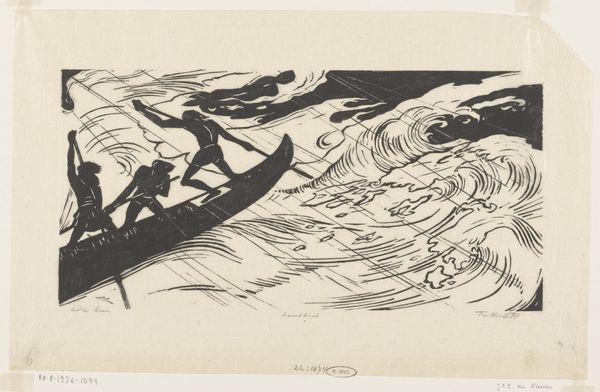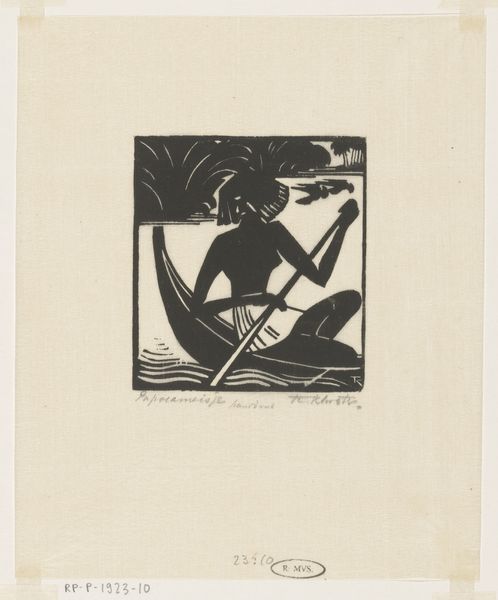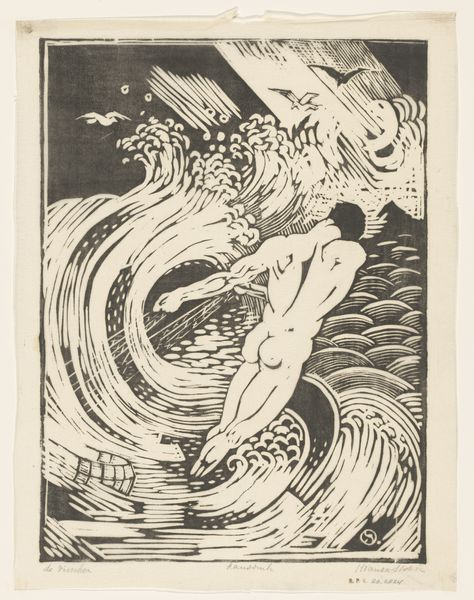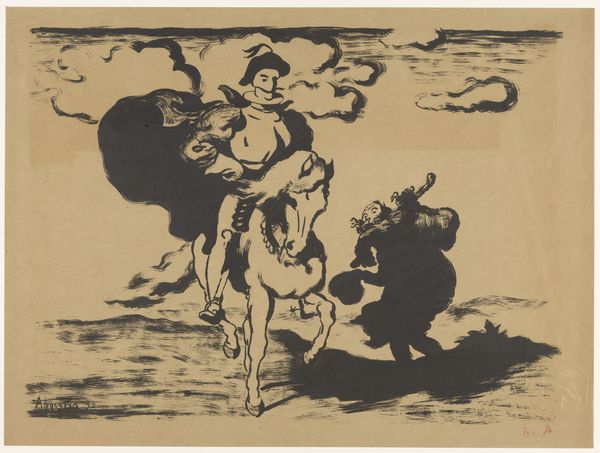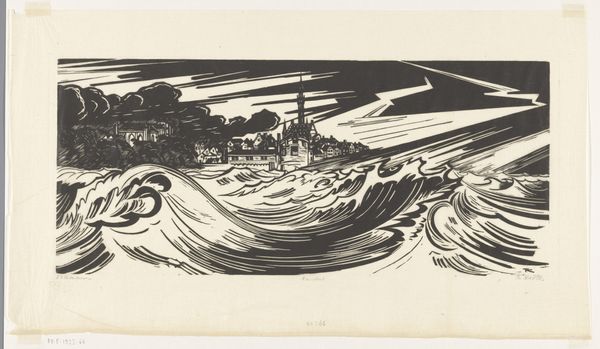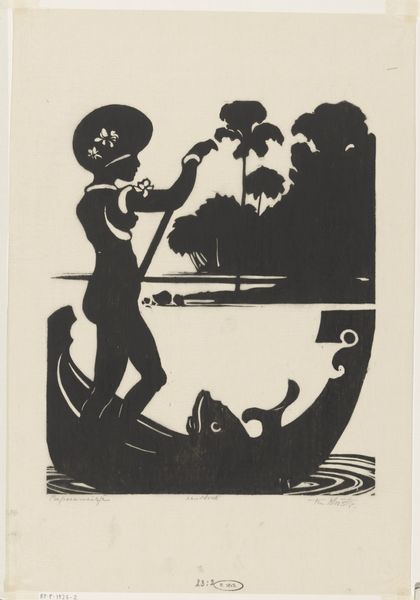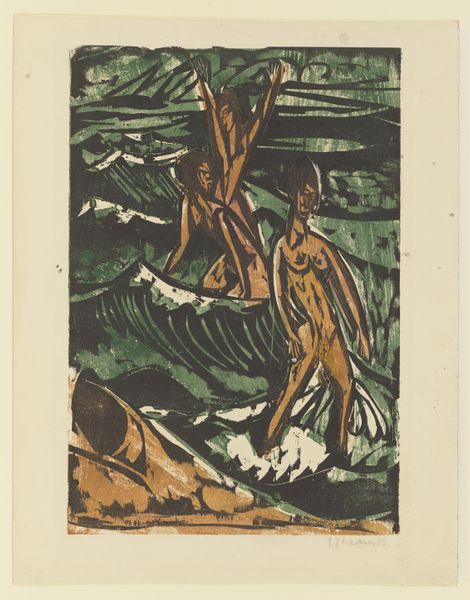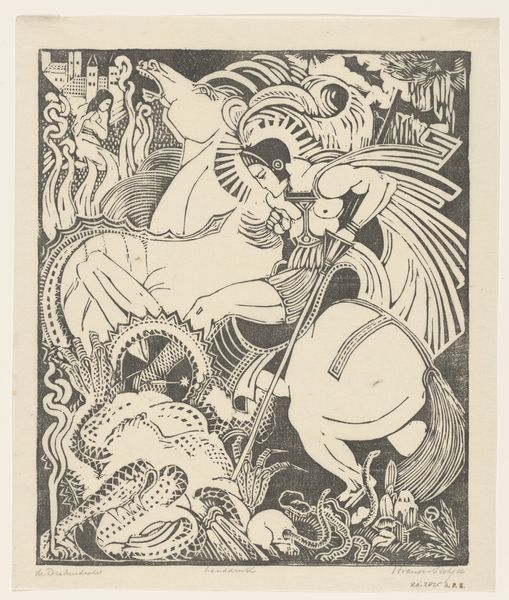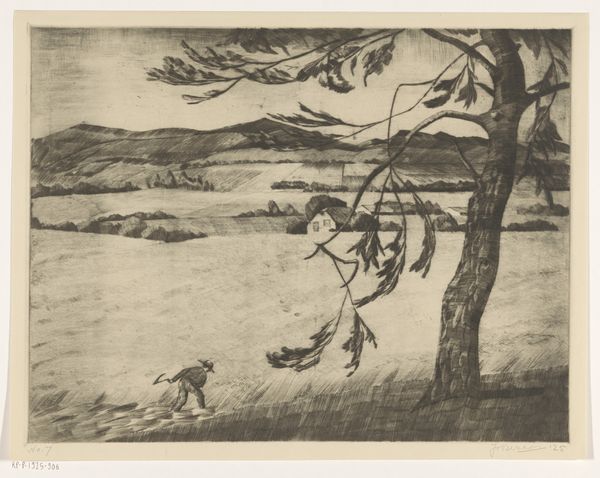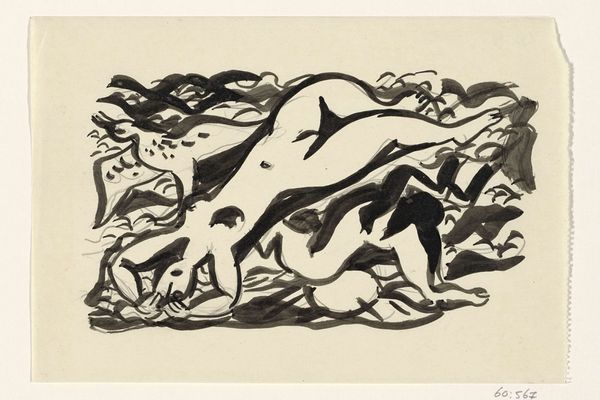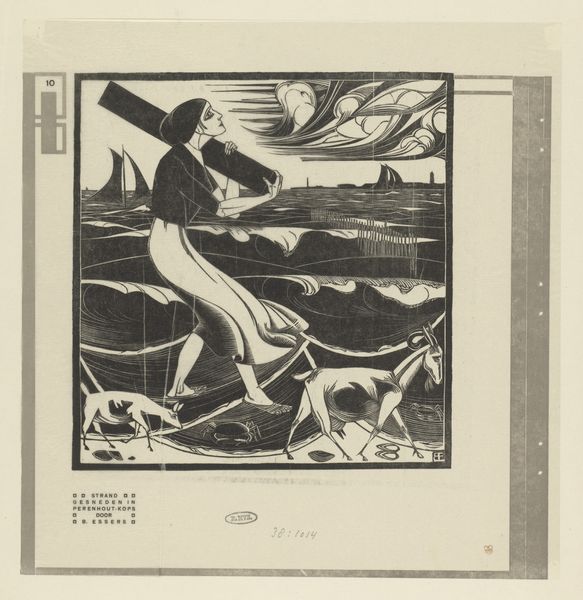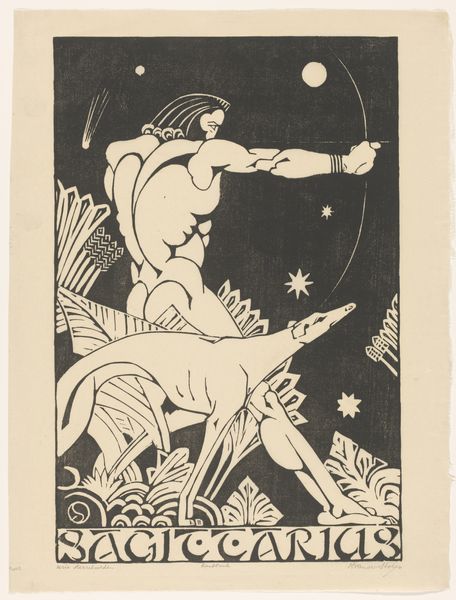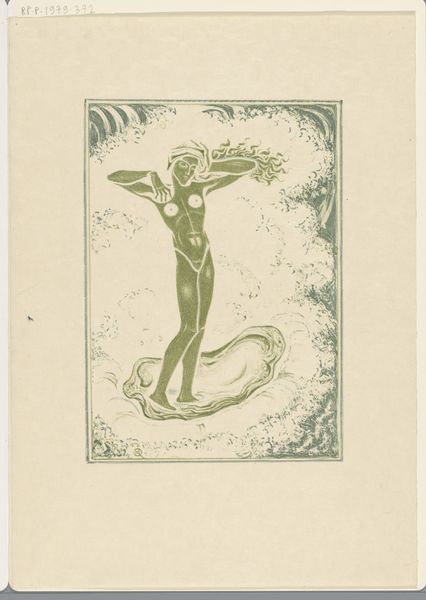
drawing, print, linocut, paper, ink
#
drawing
#
blue ink drawing
# print
#
linocut
#
landscape
#
figuration
#
paper
#
ink
Dimensions: height 289 mm, width 418 mm
Copyright: Rijks Museum: Open Domain
Curator: Immediately I’m struck by how stark and powerful this image is. The contrast just vibrates, doesn’t it? Editor: It does. What you're seeing is titled "De Buit," or "The Prey" made around 1927 by Johannes Frederik Engelbert ten Klooster. It’s a linocut, so think bold, graphic, high-contrast. Curator: Yes! Like shadows playing on the ocean’s surface. I love how stylized it is. A fisherman, or perhaps a fisherwoman – silhouette against the waves, harpooning a dolphin. There’s this intense energy of the hunt captured in a simple print. Editor: The scene presents some complexities. This work highlights the dynamic between humans and nature. But I wonder if the term "prey" is really meant for the fish alone, given how Indigenous communities who are dependent on the sea are, even today, threatened by industrial fishing. Curator: Ah, an insightful perspective! I was simply enjoying the surface drama. I now sense an implied narrative about resources, maybe even exploitation. Do you think the stark black and white contributes to this feeling? Editor: Absolutely. The lack of nuance emphasizes the power dynamic. Black and white aren't neutral; it polarizes the seen and the unseen to give form and value. Also the figure's musculature seems accentuated; do you consider that that, by extension, could signal other historical forces at play in its artistic and societal context? Curator: Yes. Now that you mention it, it makes me think about… gosh, is it okay to say, the hunter's gender? Because her exaggerated biceps give her an assertive stance on the territory, while other members of the hunting group—those aboard the ship, are less accentuated and seem more like secondary players. It challenges common artistic portrayals of male dominance. Editor: Precisely. Art isn’t created in a vacuum. The artist, even unconsciously, absorbs and reflects the power structures of their time while simultaneously opening the window for progressive alternatives. I think it could also echo something bigger about this person, something internal or societal; someone in that era could be seen as challenging the established status quo, or could symbolize greater access to the ocean’s wealth as a potential driver for societal change and independence. Curator: What a thought-provoking piece, and what a shift in my own perspective just by chatting with you! What began as simple visual drama becomes a meditation on our relationship with nature, gender dynamics, and social justice! It’s quite powerful, I agree! Editor: Yes, art really makes us think, doesn't it?
Comments
No comments
Be the first to comment and join the conversation on the ultimate creative platform.
